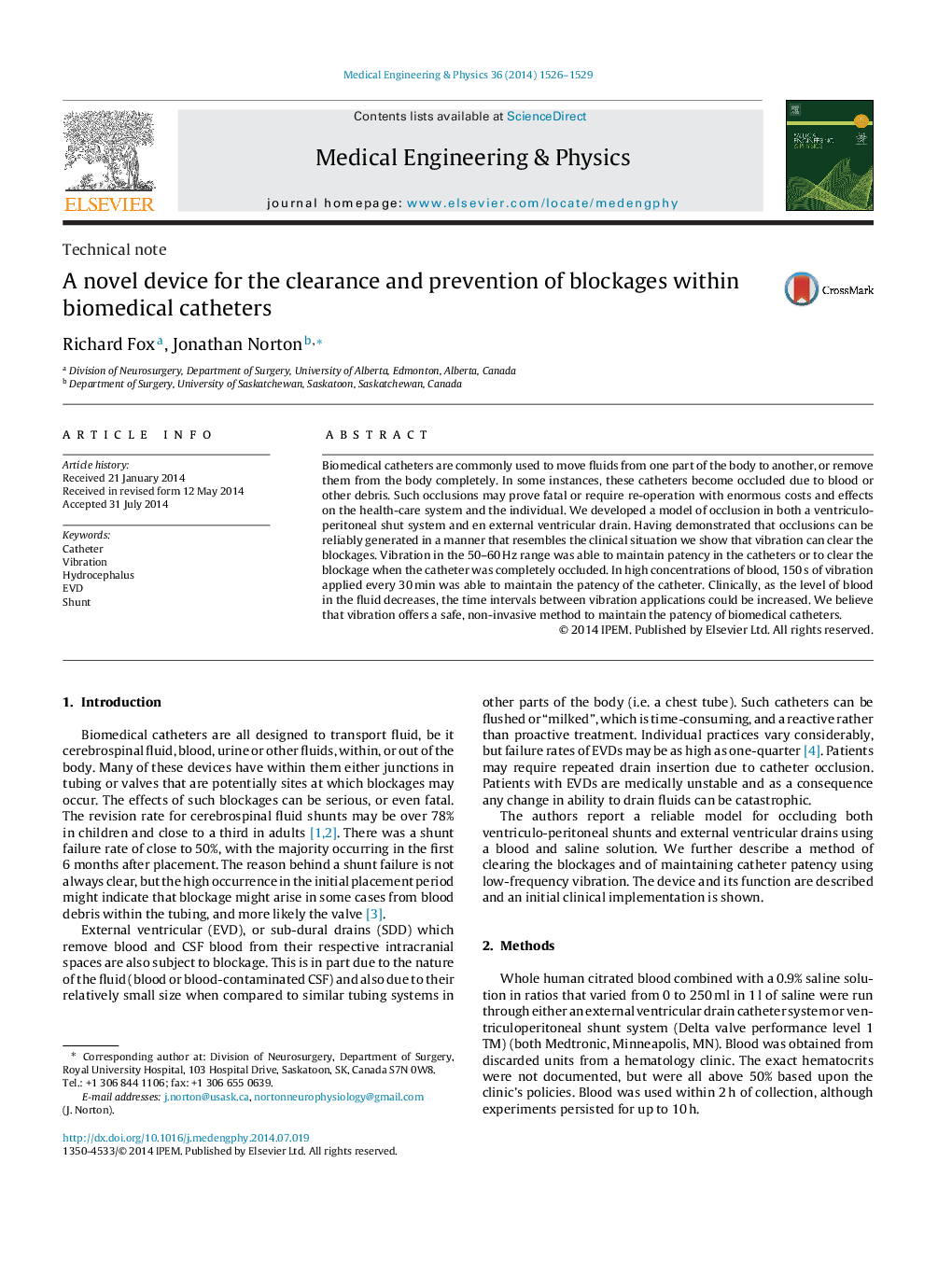| Article ID | Journal | Published Year | Pages | File Type |
|---|---|---|---|---|
| 10435076 | Medical Engineering & Physics | 2014 | 4 Pages |
Abstract
Biomedical catheters are commonly used to move fluids from one part of the body to another, or remove them from the body completely. In some instances, these catheters become occluded due to blood or other debris. Such occlusions may prove fatal or require re-operation with enormous costs and effects on the health-care system and the individual. We developed a model of occlusion in both a ventriculo-peritoneal shut system and en external ventricular drain. Having demonstrated that occlusions can be reliably generated in a manner that resembles the clinical situation we show that vibration can clear the blockages. Vibration in the 50-60Â Hz range was able to maintain patency in the catheters or to clear the blockage when the catheter was completely occluded. In high concentrations of blood, 150Â s of vibration applied every 30Â min was able to maintain the patency of the catheter. Clinically, as the level of blood in the fluid decreases, the time intervals between vibration applications could be increased. We believe that vibration offers a safe, non-invasive method to maintain the patency of biomedical catheters.
Related Topics
Physical Sciences and Engineering
Engineering
Biomedical Engineering
Authors
Richard Fox, Jonathan Norton,
